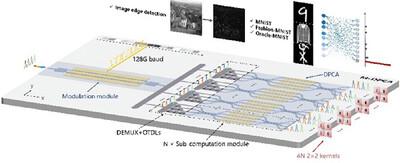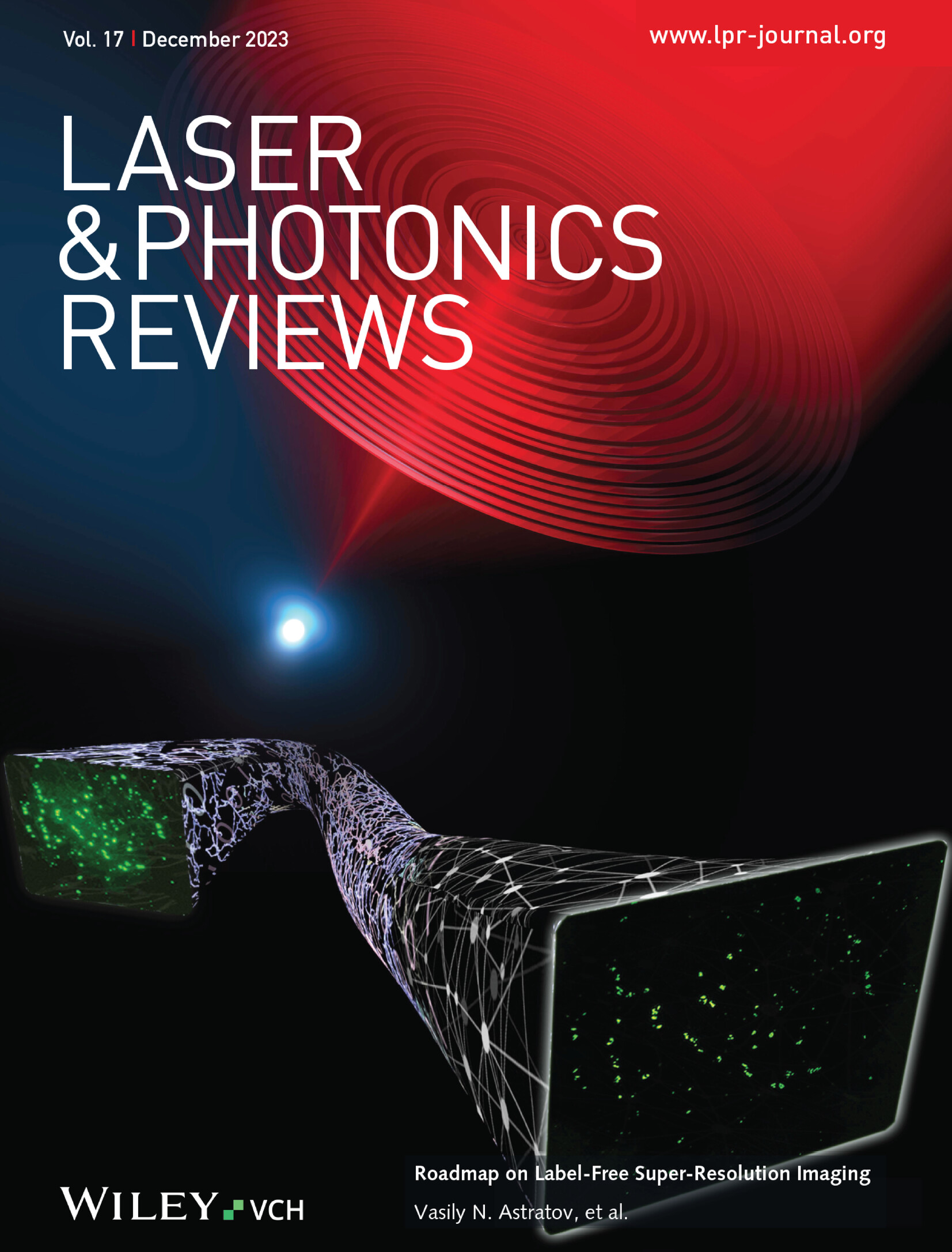Unlocking High-Speed and Energy-Efficiency: Integrated Convolution Processing on Thin-Film Lithium Niobate
IF 9.8
1区 物理与天体物理
Q1 OPTICS
引用次数: 0
Abstract
Optical neural networks (ONNs) have emerged as high-performance neural network accelerators, owing to its broad bandwidth and low power consumption. However, most current ONN architectures still struggle to fully leverage their advantages in processing speed and energy efficiency. Here, we demonstrate a large-scale, ultra-high-speed, and low-power ONN distributed parallel computing architecture, implemented on a thin-film lithium niobate platform. It can encode image information at a modulation rate of 128 Gbaud and perform 16 parallel 2 × 2 convolution kernel operations, achieving 8.190 trillion multiply-accumulate operations per second (TMACs/s) with a power efficiency of 4.55 tera operations per second per watt (Tops/W). This work conducts proof-of-concept experiments for image edge detection and three different ten-class dataset recognitions, showing performance comparable to digital computers. Thanks to its excellent scalability, high speed, and low power consumption, the integrated distributed parallel optical computing architecture shows great potential to perform much more sophisticated tasks for demanding applications, such as autonomous driving and video action recognition.

求助全文
约1分钟内获得全文
求助全文
来源期刊
CiteScore
14.20
自引率
5.50%
发文量
314
审稿时长
2 months
期刊介绍:
Laser & Photonics Reviews is a reputable journal that publishes high-quality Reviews, original Research Articles, and Perspectives in the field of photonics and optics. It covers both theoretical and experimental aspects, including recent groundbreaking research, specific advancements, and innovative applications.
As evidence of its impact and recognition, Laser & Photonics Reviews boasts a remarkable 2022 Impact Factor of 11.0, according to the Journal Citation Reports from Clarivate Analytics (2023). Moreover, it holds impressive rankings in the InCites Journal Citation Reports: in 2021, it was ranked 6th out of 101 in the field of Optics, 15th out of 161 in Applied Physics, and 12th out of 69 in Condensed Matter Physics.
The journal uses the ISSN numbers 1863-8880 for print and 1863-8899 for online publications.

 求助内容:
求助内容: 应助结果提醒方式:
应助结果提醒方式:


